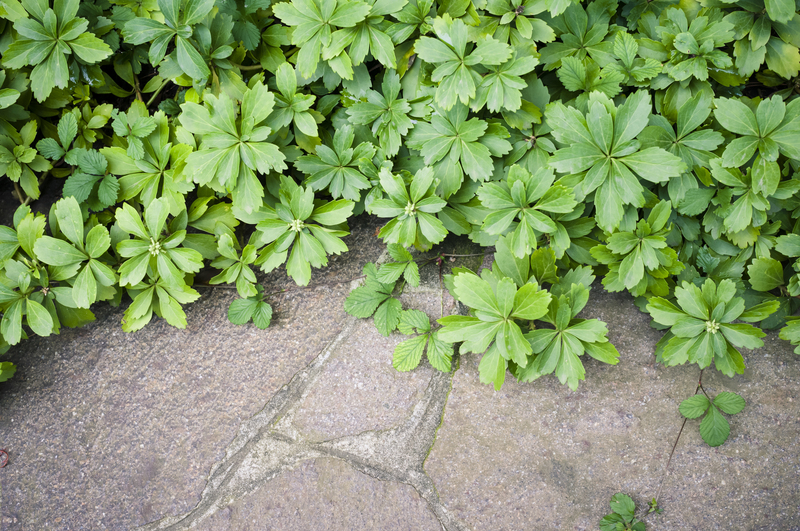Smart Watering Methods to Shield Your Lawn from Drought Stress
Is your once-lush lawn turning brown and brittle under unforgiving sun? Drought stress is a real threat for lawns, especially as temperatures rise and rainfall becomes erratic. However, with intelligent watering techniques and a solid understanding of your lawn's needs, you can protect your turf even during prolonged dry spells.
This comprehensive guide explores the latest smart watering methods to shield your lawn from drought stress. We'll uncover practical tips, advanced irrigation technologies, and landscaping strategies to help your lawn stay resilient, efficient, and beautiful--all while minimizing water waste.

Understanding Drought Stress in Lawns
Before diving into the best watering techniques, it's important to recognize what drought stress looks like and why it happens. Drought stress occurs when the water needs of your grass exceed the available moisture in the soil. This can lead to symptoms such as:
- Leaf wilting, folding, or rolling
- Discoloration (blades turning grayish-blue or yellow-brown)
- Footprints remaining visible after walking across your lawn
- Dry, cracked soil
Grass under drought pressure becomes vulnerable to weeds, pests, and disease. Understanding the signs gives you a head start in preventing long-term damage.
Why Smart Watering Is Essential
Conventional watering practices, such as daily sprinkling or watering during peak sun hours, are not only wasteful but also ineffective during droughts. Excessive or shallow watering encourages weak root systems and can exacerbate drought effects.
That's where smart watering methods for drought protection come into play. By aligning your irrigation habits with the needs of your grass and the realities of your climate, you can achieve a healthy, drought-resistant lawn with less effort and less water.
Benefits of Smart Watering
- Reduces water usage and environmental impact
- Promotes deep root growth for greater drought resilience
- Improves turf health and appearance
- Saves time and money on lawn maintenance
Smart Watering Methods to Shield Your Lawn from Drought
1. Water Deeply and Infrequently
A common mistake is to water lawns lightly on a daily basis. Shallow watering trains roots to remain near the surface, where moisture is quick to evaporate. The best practice is to water deeply, but less often--typically once or twice per week, providing 1 to 1.5 inches of water each time.
- Check soil moisture 4-6 inches below the surface to ensure water is penetrating deeply.
- Use an empty can or rain gauge to measure the amount of water applied.
2. Timing Is Everything: Water Early in the Morning
Smart irrigation for drought resistance starts with the clock. Watering early--ideally between 4 a.m. and 9 a.m.--reduces water loss from evaporation and wind. Night watering increases the risk of fungal diseases, while midday watering leads to waste.
- Set sprinklers to run automatically during early morning hours.
- Avoid watering on windy days to prevent drift and uneven coverage.
3. Upgrade to Efficient Irrigation Systems
Modern irrigation technology can transform your approach to lawn care. Consider these smart watering solutions to prevent drought damage:
- Soil Moisture Sensors: Devices that measure real-time moisture levels, allowing your system to water only when necessary.
- Weather-Based Controllers: These smart controllers adjust watering schedules based on weather forecasts, rainfall, and seasonal changes.
- Drip Irrigation: While less common for lawns, targeted drip systems can efficiently hydrate garden beds and borders.
- Pressure-Regulated Sprinkler Heads: These minimize misting and maximize water delivery to the root zone.
Many of these systems are Wi-Fi enabled, allowing you to manage watering remotely via smartphone apps.
4. Choose the Right Sprinkler Type for Your Lawn
Matching your sprinkler to your lawn's size and shape is crucial for smart irrigation during drought periods:
- Rotary Sprinklers: Ideal for large, open lawns. They deliver water slowly and evenly, promoting deep soaking.
- Oscillating Sprinklers: Good for rectangular areas, delivering broad, gentle coverage.
- Stationary/Bubbler Heads: Best for small or oddly shaped patches, ensuring water isn't wasted on driveways or sidewalks.
5. Adjust Watering According to Grass Type
Not all grasses respond to drought the same way. Understanding your turf's needs lets you fine-tune your lawn watering for drought conditions:
- Cool-season grasses (like fescue, bluegrass, and ryegrass) need more water but can survive short droughts by turning dormant.
- Warm-season grasses (such as Bermuda, zoysia, and buffalo grass) handle heat and drought better, often requiring less frequent watering.
*When in doubt, contact your local extension service for advice specific to your region and lawn variety.*
Maximize Water Absorption and Lawn Health
6. Aerate and Dethatch Your Soil
Compacted soil and excess thatch (the layer of dead grass) prevent water from reaching roots. Annual aeration--removing small plugs of soil--improves absorption dramatically.
- Dethatching: Use a rake or dethatcher to remove thatch thicker than a half inch.
- Aeration: Best done in early spring or fall for cool-season grasses, and late spring to summer for warm-season lawns.
7. Use Mulching for Moisture Retention
A layer of mulch around flower beds and at lawn edges helps lock in soil moisture and moderate temperatures. Grass clippings also act as free mulch--leave them after mowing to provide a natural protective cover.
8. Mow High and Less Often
Taller grass shades the soil, reducing water evaporation. Set your mower blades to the upper end of recommended heights (typically 3-4 inches for most species). Less frequent mowing prevents additional stress during dry periods.
- Leave clippings on the lawn for a natural mulch effect.
- Sharpen mower blades for clean cuts that minimize water loss.
9. Strategic Fertilization and Pest Management
Avoid heavy fertilizing in drought, as it stimulates growth that can't be sustained. Instead, opt for slow-release or organic fertilizers and target pest problems early to prevent compounding stress.
Smart Watering Tools & Technologies
10. Invest in Smart Controllers and Timers
Modern smart irrigation controllers take the guesswork out of watering. These devices use local weather data and soil conditions to automatically adjust your schedule, maximizing efficiency. Many models are EPA WaterSense certified and integrate with home automation systems!
11. Mobile Apps for Connected Watering
Control your sprinkler system anytime, anywhere. Most smart controllers offer companion apps, letting you monitor water usage, receive drought warnings, and fine-tune zones with ease.
12. Rain Sensors and Soil Probes
Attach rain sensors to your sprinkler system so it automatically pauses during and after rainfall. For extra-pristine monitoring, use soil moisture probes to measure water at the root zone and only irrigate when necessary.
Eco-Friendly and Sustainable Watering Practices
13. Harvest Rainwater
Install rain barrels or cisterns to collect runoff from your roof for later use. This sustainable method provides a free water source entirely exempt from municipal restrictions during droughts.
14. Xeriscaping and Native Plants
Reimagine your lawn with xeriscaping principles. Incorporate drought-tolerant grass species and ornamental plants that naturally thrive in your climate. Native plants require far less water than traditional lawns and attract beneficial wildlife.
15. Reduce Lawn Area
Consider replacing parts of your lawn with gravel, pavers, or ground covers that don't require regular watering. This not only saves water but also reduces your maintenance footprint.
Common Mistakes to Avoid During Drought
- Watering at the wrong time: Avoid late afternoon or evening irrigation when disease risk is highest.
- Overwatering: More is not always better; aim for efficiency and depth.
- Neglecting maintenance: Ignoring aeration, mowing, or system repairs undermines your drought defense strategy.
- Using the wrong sprinkler: Choose a system that matches your lawn size and shape.
FAQ: Smart Watering and Drought Stress
How much water does my lawn really need during drought?
Most lawns need about 1 to 1.5 inches of water per week. This may vary based on grass type, weather, and soil conditions. Deep, infrequent watering is best.
Can my grass survive by going dormant?
Yes! Many turfgrasses enter a state of dormancy during drought, turning brown but not dying. If you choose not to water, limit foot traffic, mow high, and resume irrigation once rainfall returns.
Should I reseed my lawn after drought?
If areas fail to recover after drought, overseeding with drought-tolerant grasses in the fall (for cool-season lawns) or late spring (for warm-season lawns) can restore health and resilience.

Conclusion: Your Blueprint for Drought-Resistant Lawns
With increasingly unpredictable weather patterns, adopting smart watering methods to shield your lawn from drought stress is more important than ever. Deep, infrequent early-morning watering, efficient sprinkler systems, and eco-friendly landscaping are the pillars of drought defense.
By understanding your lawn's unique needs and keeping up with the latest smart irrigation technology, you can enjoy a green, healthy landscape even during the toughest dry spells.
Remember: Every drop counts. Embrace smart watering today--and shield your lawn for tomorrow!
Further Reading & Resources
- Local Cooperative Extension Offices: Find region-specific drought and lawn care guides.
- EPA WaterSense Program: www.epa.gov/watersense
- Smart Irrigation Products: Check with local garden centers for the latest technologies.
Got questions about smart watering methods for drought-stressed lawns? Leave a comment or consult your local landscaping professionals for expert advice on sustainable lawn care solutions!